“That’s it… It’s completely finished. We shouldn’t have stopped here.”
Those words echoed in my mind as I stood on a narrow ridge overlooking two of the grandest valleys in all of Gilgit-Baltistan—Hunza and Nagar. The sound of the engine still hummed faintly in my ears, though the motorcycle had long fallen silent. The clouds drifted lazily across the sky, brushing the snow-laden peaks of Rakaposhi and Diran like white silk. And for a moment, I stood there—just a traveler, overwhelmed by beauty.
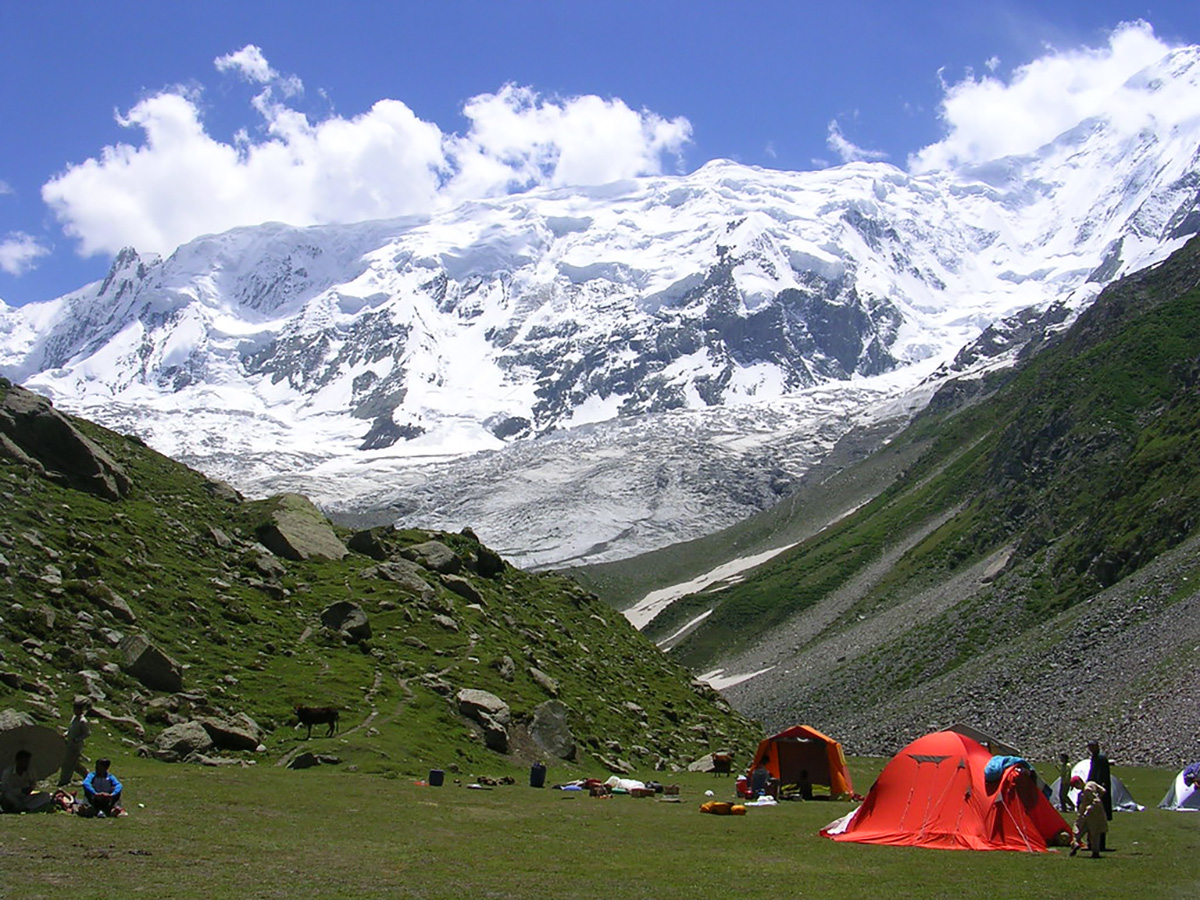
But this story didn’t begin here. It began the night before, on a rain-slicked road, winding through the dark valleys of northern Pakistan.
Arrival at Minapin
We reached Minapin, in the Nagar Valley, close to 11 p.m. It had been a long and wet ride from Sasi—one of those journeys where your body aches, your clothes stick to your skin, and every kilometer feels like a small victory.
Rain had followed us for most of the way, sometimes gently kissing the visor, other times lashing against us like needles. Yet, by Allah’s grace, we made it safely.
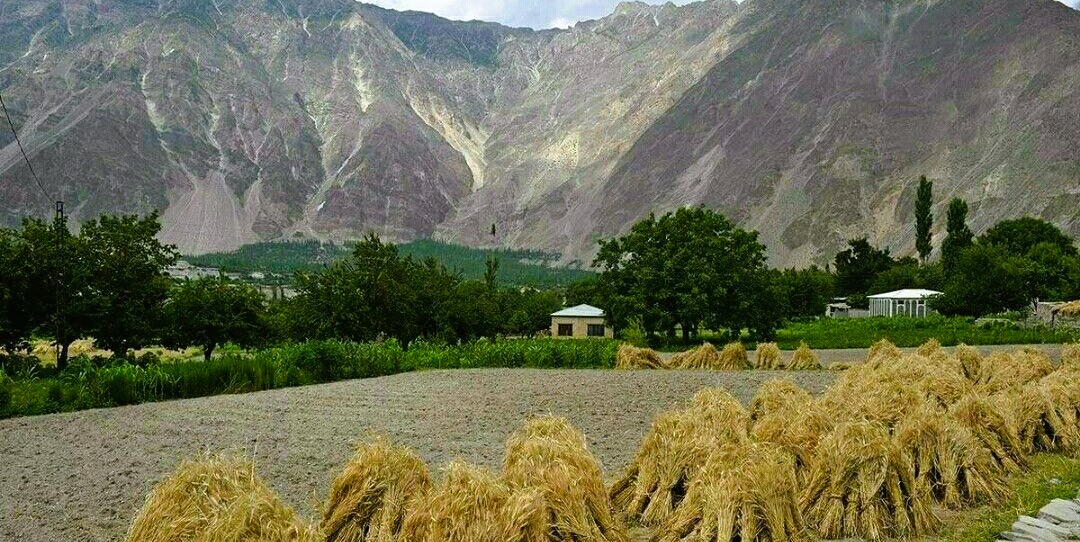
Our stop for the night was Roomy Yurts, a small setup tucked beside Osho Thang Hotel. I had shown my viewers the inside of the yurt last night—a circular wooden-framed tent with a domed roof and soft bedding inside. But this morning, standing outside, I could see their full charm. Five yurts stood proudly in a small field, their white canopies gleaming under the early sunlight. A perfect balance between wilderness and comfort.
If you’ve ever wanted to experience the adventure of camping, but without sacrificing comfort—a yurt stay in Nagar might be your dream come true. Warm beds, a touch of luxury, and the whisper of mountain winds outside your door. Highly recommended.
Morning in the Mountains
We woke late—9 a.m. to be exact. Our bodies were still tired from yesterday’s ride. The first task of the day was breakfast, and oh, what a breakfast it was.
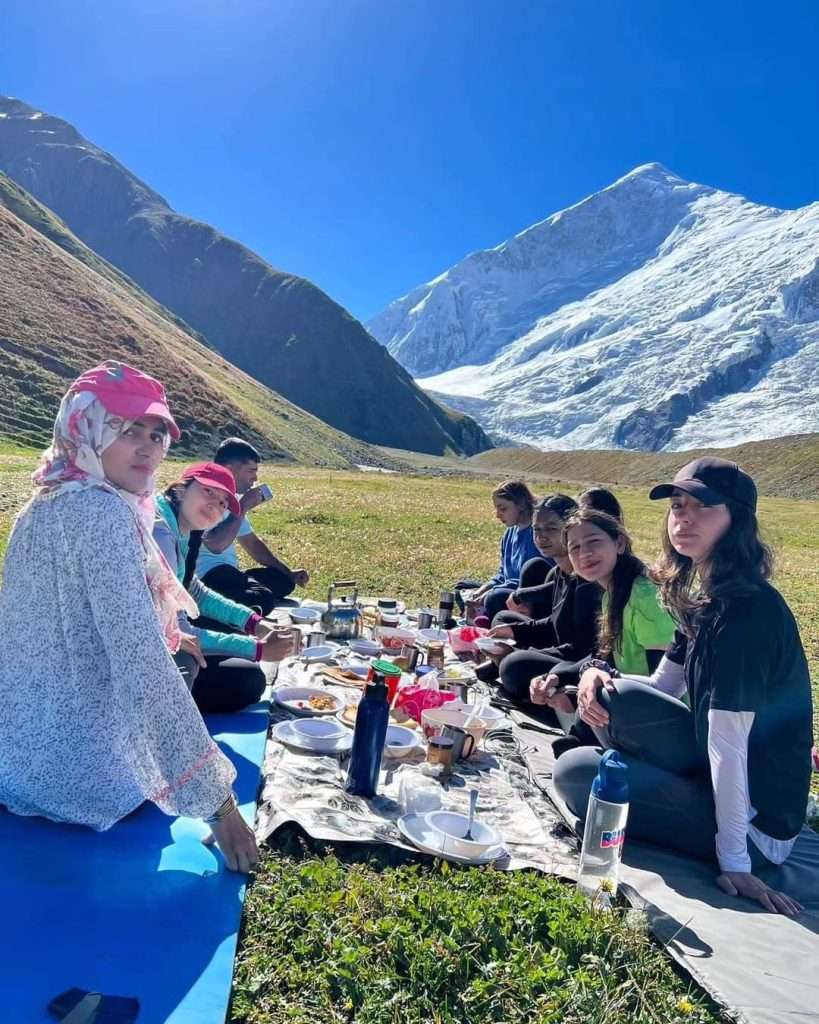
The locals had prepared something they called Tianshoro—a traditional egg omelet, soft and fluffy, mixed with tomatoes and spices. Alongside it came parathas, fresh bread, and a jar of homemade apricot jam—a delicacy of this region, where apricot trees grow in abundance.
The jam was sweet and golden, and every bite seemed to hold the essence of these valleys. Sitting there, surrounded by friends—Ali and Yasir—and our generous host Asrar, I couldn’t help but feel grateful.
Asrar’s young son, Noorullah, came over with a bright smile.
“What’s your channel’s name?” I asked.
“Pahari Bacha,” he said proudly, “I do vlogging.”
The Mountain Kid—aptly named for someone growing up amidst such grandeur.
Before leaving, we thanked Asrar and his family for their hospitality. The yurt had kept us warm and safe, even as the mountain winds howled outside. But now, it was time to move on.
Fuel, Friendship, and Faith
Before setting off, we needed fuel. In these high valleys, petrol isn’t available at every turn. A man stood by the road with small canisters, selling at PKR 280 per liter—a bit more than the market rate, but understandable considering the remoteness of this place. We filled up our tanks and got ready to roll.
As always, we began our ride with a short prayer for the journey—asking Allah for safety, adventure, and a day filled with memories.
“Bismillah…” I whispered, kicking the engine to life. The mountain air was crisp, the sun bright, and the promise of discovery hung over us.
The Road to Kho
Yasir led the way—he’d been here once before but couldn’t complete the track then. This time, we were determined to reach the hidden viewpoint that Asrar had told us about—a place from where both Rakaposhi and Diran Peak could be seen, along with their majestic glaciers.
As we climbed higher, the Karakoram Highway (KKH) gleamed below us like a silver thread, cutting through the valley toward Hunza and the Khunjerab Pass—the gateway to China. On one side of the river lay Hunza, the tourist favorite; on the other, Nagar, less explored but equally blessed by nature.
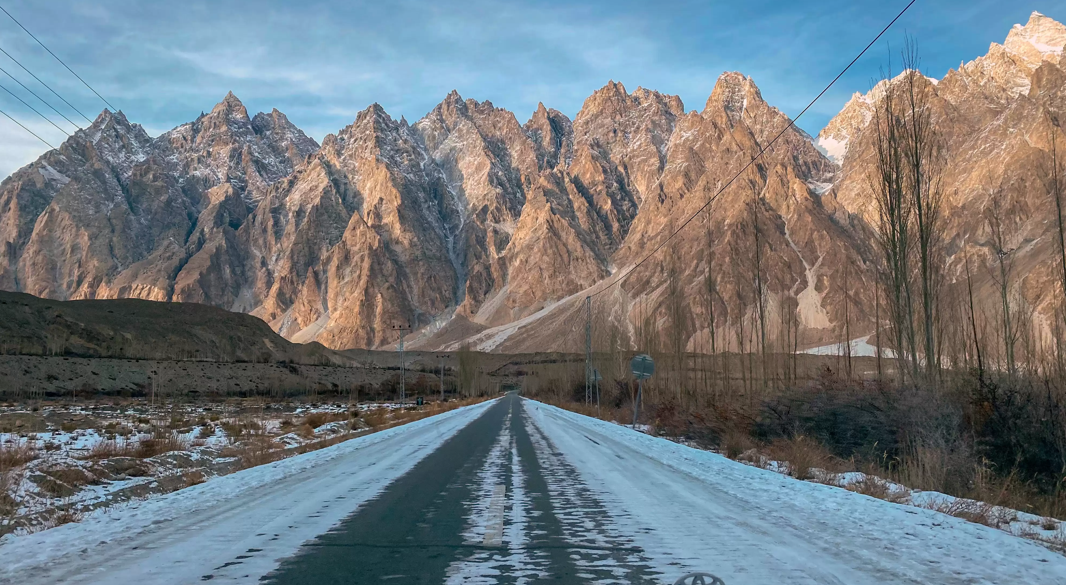
The road coiled up like a snake, the landscape changing every few turns. Lush fields of wheat and corn stretched across terraces, golden under the sunlight. Small stone houses dotted the slopes, each with a plume of smoke rising gently from its chimney.
We stopped to ask for directions at Miachar village, the last settlement before the wilderness began.
“Which way to Kho?” I asked a local man.
He pointed toward a small house above. “Go up from there. The road’s good—suitable for bikes.”
The villagers smiled warmly, curious yet welcoming. Life here was simple—women washing dishes by mountain streams, children chasing goats, men repairing roofs of stone. The literacy rate here, like in Hunza, is surprisingly high. Education thrives even where comfort is scarce.
Riding the Ridge
From Miachar, the real adventure began. The dirt track hugged the mountainside, twisting and turning with dizzying drops on one side. The higher we went, the more spectacular the view became. Down below, green meadows rolled into deep valleys, framed by the rugged walls of the Karakoram.
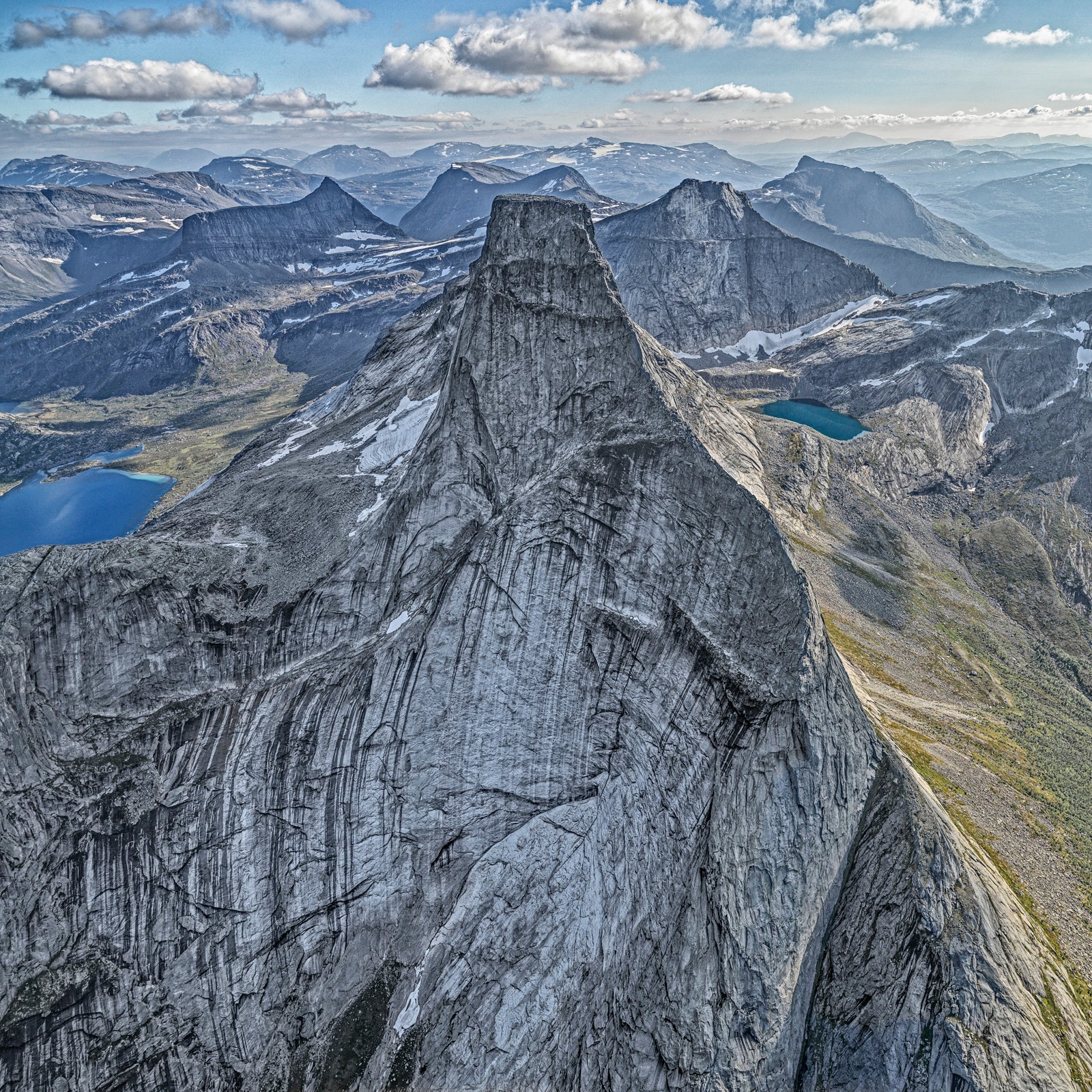
The ride was exhilarating—part joy, part challenge. Small rocks occasionally skidded under our tires, but the track was surprisingly well-maintained. The air grew thinner, colder. Every few minutes, we’d pause—not because the bikes needed rest, but because we couldn’t resist the views.
At around 11,000 feet, we stopped to catch our breath. The bikes trembled beneath us as we climbed a particularly steep patch.
“Don’t fall back, Yasir!” I called out.
He grinned, engine roaring, the machine barely holding traction.
“It’s too much for a 310,” he laughed.
Eventually, the climb became impossible on two wheels. The track was too steep, too rough. We decided to leave our motorcycles behind and walk the rest of the way.
The Hidden Viewpoint
The moment we crested the ridge, the world opened before us—and every ounce of exhaustion vanished.
Before us stood Rakaposhi, her white summit piercing the sky like a crown of light. To her left, Diran Peak, equally proud, shimmering in the sunlight. And below them, the long icy river of the Minapin Glacier, winding its way through the valley like a frozen serpent.
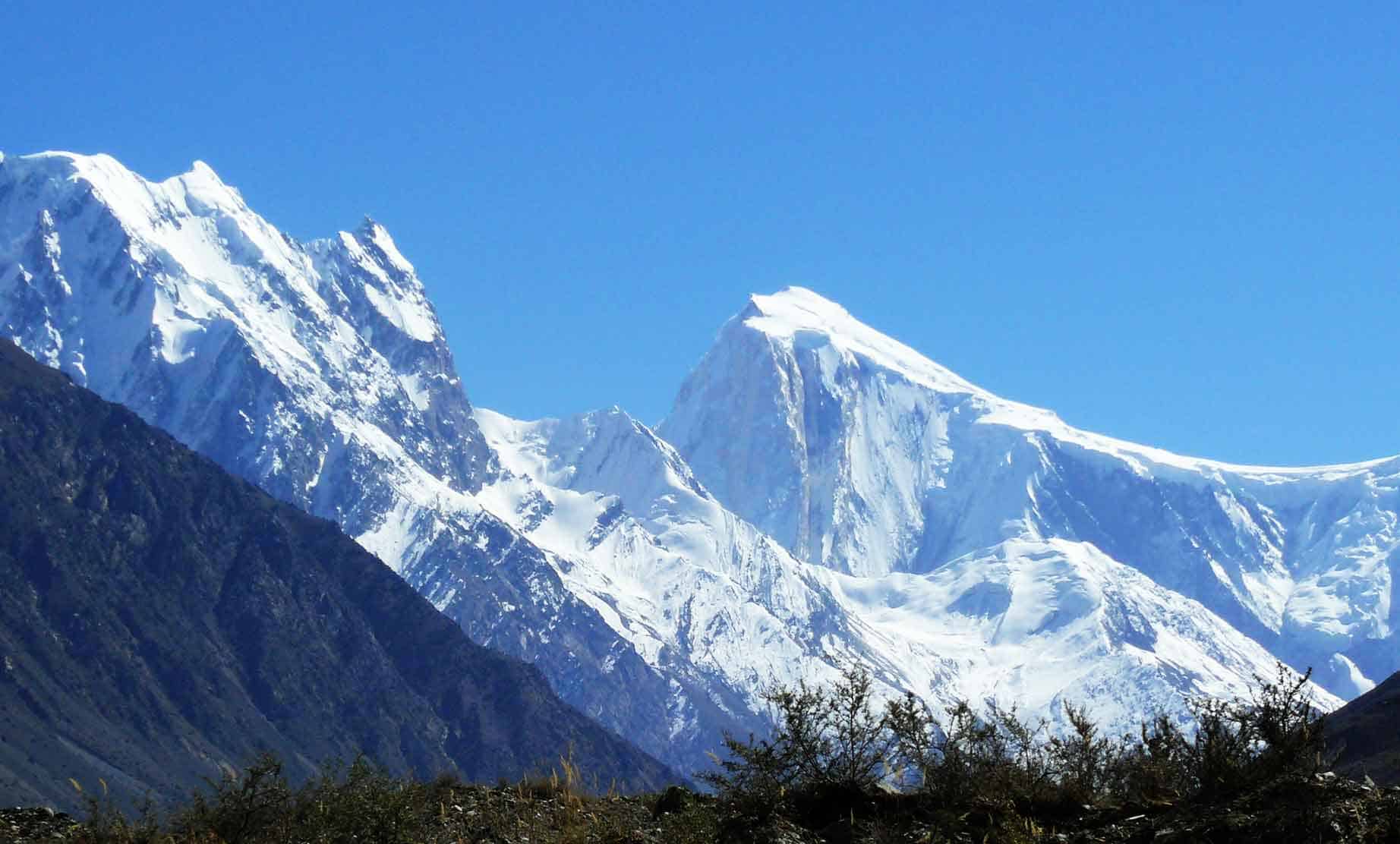
It was breathtaking. No photo, no video, no word could capture that feeling.
Behind us, clouds gathered—moving like a slow tide, sometimes cloaking the peaks, sometimes revealing them again. The wind howled, carrying the scent of snow. The entire panorama seemed alive—changing every minute.
We stood there in silence.
“SubhanAllah…” someone whispered.
Far below, a few colored tents marked Hapakun, a small campsite used by trekkers on their way to the Rakaposhi Base Camp. The full trek takes about two days from here, we were told. Today, we’d gone as far as our motorcycles—and hearts—could take us.
Nearby, we met Afsar and Ali, two men from Gilgit who had hiked up here as well. Like us, they were in awe. Yet despite its unmatched beauty, this place had no facilities—no water, no restaurant, no signboards. Only peace and silence.
“This place could be a top destination,” I thought aloud, “if only more people knew.”
Tea, Figs, and the Sky
Sitting on a rock, we shared a small meal—biscuits and dried figs we’d bought from a local market for PKR 300 per kilogram. The figs, sweet and chewy, tasted like pure mountain sunlight.
“They’re local,” said Afsar. “Best thing for your stomach.”
We laughed, passing them around. Hunger didn’t matter anymore. The view fed our souls.
But travel always brings small challenges. One of our tires had gone soft—perhaps a puncture. Luckily, I had a Moose Racing repair kit from GoWild Store in Lahore, though we’d forgotten the air pump. Thankfully, I also had a small CO₂ cylinder, meant for emergencies.
We tested it—it hissed, filled the tire instantly, and turned frosty white from the pressure. A small victory on the mountain.
And as always, we packed up every bit of trash. Nothing was left behind except our footprints and our gratitude.
The Descent
We spent nearly four hours up there, watching clouds come and go, the light shifting from gold to silver to blue. When it was time to leave, it felt like saying goodbye to a friend.
The ride downhill was smoother. The air grew warmer, the villages returned, and soon the mighty Karakoram Highway came into view again. By 5 p.m., the peaks of Hunza began to glow in the late sunlight.
It’s amazing how much beauty this region holds—how many 7,000-meter peaks rise silently, unseen by most of the world. Pakistan truly is a land blessed beyond measure.
Arrival at Attabad Lake
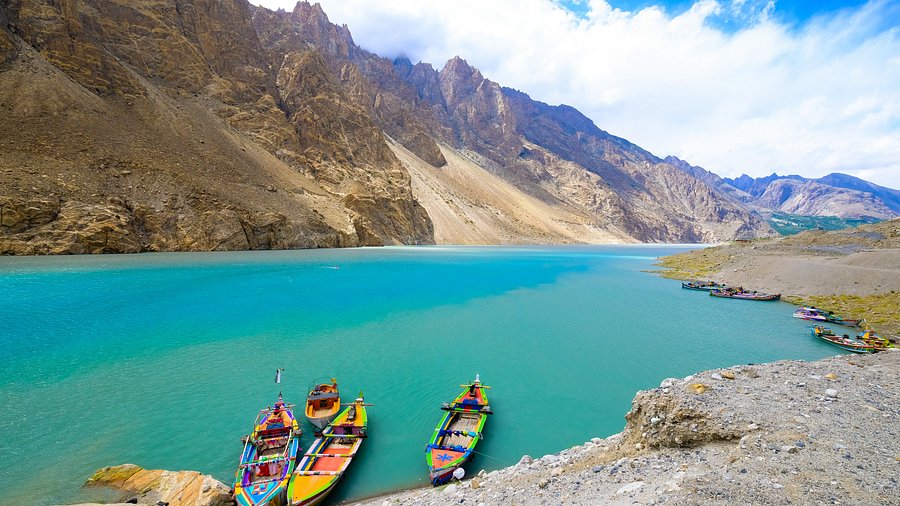
Arrival at Attabad Lake
By the time the sun began to sink behind the jagged Karakoram peaks, we were back on the main highway—dusty, tired, but deeply content. The day had been long, the air thin, the mountains relentless. Yet the sense of accomplishment was heavy in our hearts. As the road curved and descended toward Attabad, the sky turned into a painting—streaks of crimson and gold reflecting off the distant snowcaps.
I’ve seen many landscapes in Pakistan—valleys, deserts, and glaciers—but there’s something magical about Attabad Lake. Maybe it’s the color of the water—an impossible turquoise that seems to glow even under twilight—or maybe it’s the story behind it. Born from tragedy, when a massive landslide in 2010 dammed the Hunza River, the lake swallowed entire villages. But over time, it transformed from disaster to beauty, now standing as one of the most iconic sights in Gilgit-Baltistan.
As we rode into the lakeside area, the cool wind hit our faces. The scent of pine and wet stone filled the air. The lights of hotels flickered to life one by one, their reflections rippling across the calm water. Despite the traffic on the Karakoram Highway, we reached our stop without much delay. The lake appeared before us suddenly—breathtaking and still.
“This must be it,” I said, slowing the bike as we spotted the soft yellow glow of a building ahead.
Lexus Hunza Hotel.
The signboard shimmered faintly in the headlight beam. We parked our motorcycles, stretched our stiff legs, and looked out over the water. The surface was mirror-like, catching the last embers of the setting sun. For a few moments, none of us spoke. After hours of dust, sweat, and adrenaline, this was the calm we didn’t know we needed.
A Room by the Water
The reception was warm and welcoming. Within minutes, we were checked in and led to our room. It was spacious and surprisingly modern—a double bed, a spare mattress, and soft lighting that felt instantly relaxing. There were two sofas neatly arranged near the window, a small table with a tea and coffee setup, and a mini bar tucked in the corner. A cupboard stood ready to swallow our dusty bags and helmets.
The best part, though, was the balcony—a wide open space overlooking the lake. Even in the darkness, I could see the faint outline of the cliffs rising sharply from the water. The wind carried the smell of earth and mist, cool enough to refresh, gentle enough to soothe.
I turned on the shower to check the hot water—something every traveler in the north learns to do first. Satisfied with the warmth, I washed away the fatigue of the day. My clothes—stiff from days on the road—found their way to the sink, one by one. I laughed at the sight: a tired traveler doing laundry in a luxury hotel. But that’s what long journeys do—they blur the lines between necessity and comfort.
I hung the washed clothes on the balcony railing to dry. The night air was still and quiet, the lake below a pool of silver under the faint moonlight. It was hard to imagine that just hours ago we had been standing above glaciers and cliffs. The contrast between rugged wilderness and serene luxury was striking—and beautiful.
g them on the railing outside, and stepped back to breathe. Even in darkness, the lake glowed faintly, like a secret jewel under the stars.
Dinner by the Lake
Hunger hit us hard. Upstairs, the restaurant was alive with laughter and the clinking of dishes. The outdoor seating overlooked the lake—a perfect spot to unwind. Children played nearby on small rides. The air had turned cold, so I pulled on my jumper.
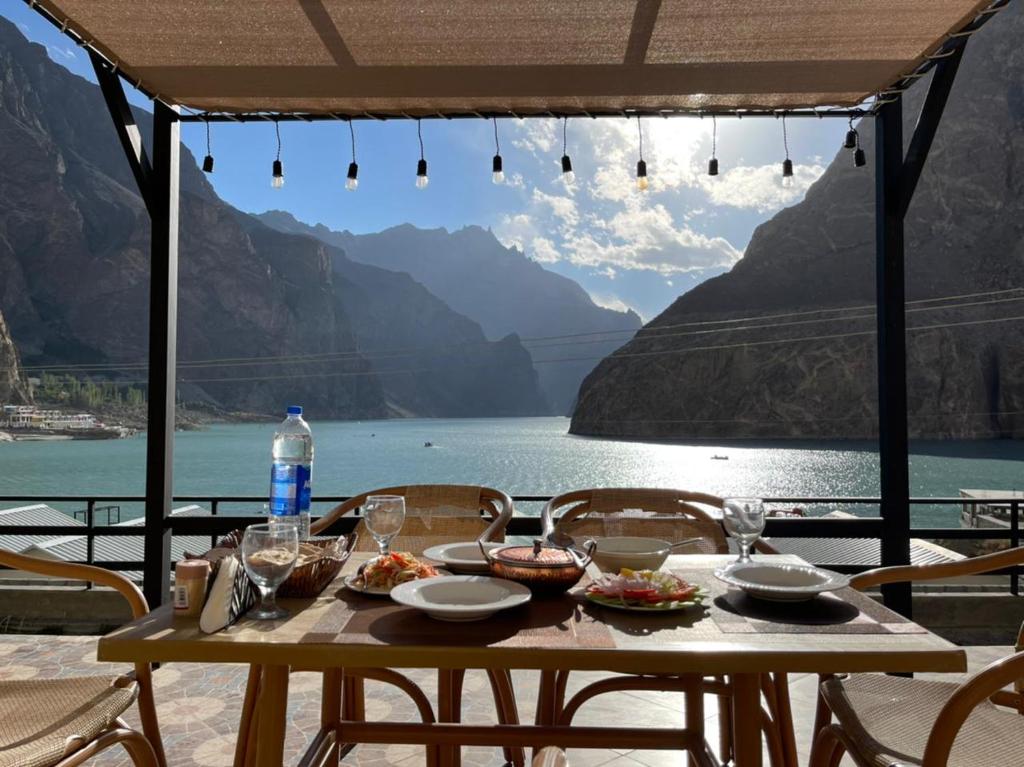
The food was worth every mile we had ridden:
-
Malai Boti, sizzling and creamy.
-
Green Masala Karahi, aromatic and rich.
-
And of course, Chap Shoro—Hunza’s signature flatbread stuffed with minced meat.
As we sat there, a family nearby sent over a cake—a kind gesture from strangers who had recognized us. We thanked them with smiles and shared the sweetness.
The entire feast cost about PKR 8,000, but the joy of that meal—eaten under the mountain stars—was priceless.
Reflections at the End of the Day
That cup of tea—simple and warm—became the closing chapter of our day. The conversation turned quiet. All three of us sat there—me, Yasir, and Ali—thinking about what we’d seen that day. From the roaring climb up Minapin’s trails to the calm of Attabad’s waters, the day had been nothing short of extraordinary.
Sometimes travel gifts you places you expect. Other times, it surprises you with those you’ve never heard of. Today was the latter. The hidden viewpoint above Minapin had stunned us—it felt like discovering a secret the mountains had kept for centuries. We couldn’t stop talking about how such a place, so close to Hunza, remained so unknown.
“I’m sure it’s going to be one of Pakistan’s top destinations soon,” I said, staring into the distance. “It deserves to be.”
The others nodded. The tea steamed gently in the cold. The hum of the lake and the faint rumble of traffic on the highway filled the night.
Finally, I turned off the camera and whispered the words that had become second nature:
“Remember us in your prayers. Don’t forget to like, subscribe, and share. We’ve worked hard for this one.”
We finished our tea in silence, content and thankful. Outside, the mountains slept under the moonlight, and the lake gleamed like polished glass. Inside, a deep peace wrapped around us like a blanket.
Tomorrow, another journey would begin. Another story. Another stretch of road winding into the heart of the Karakoram.
But for now—Attabad held us still, between memory and dream.
Somewhere out there, Rakaposhi stood silent and timeless—watching over us all.








